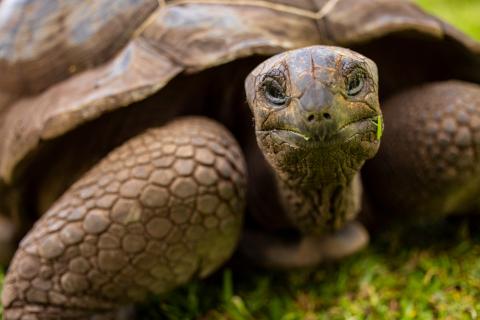What Can Turtles Tell Us About Longevity?

Photo: Hyserb/shutterstock
Looking at data from more than 100 different animals, researchers have revealed some insights into aging that may help better understand longevity in humans. The study showed that cold-blooded, four-legged animals—also known as ectothermic tetrapods—can age very quickly or extremely slowly.
Ectotherms are animals that rely on heat from their environment to regulate their body temperature, and tetrapods are vertebrate animals with four limbs. The category of ectothermic tetrapods includes non-avian reptiles, such as turtles; and amphibians, such as salamanders.
The NIA-funded study, published in Science, also revealed that aging rates decrease in species with slow-paced lives. In addition, the data suggest that animals with protective traits, such as armor, venom, shells and spines, exhibit slower aging rates. When comparing ectoderms with endotherms (the category of warm-blooded organisms that includes mammals and most birds), the research team found that ectotherms have a higher diversity of aging rates. This evolutionary study on aging may help researchers better understand aging in humans.
Researchers contributed data from 107 animals from around the world, representing 77 species of reptiles and amphibians in the wild. The scientists examined four different factors to determine whether they contributed to aging: thermoregulation, or the ability of warm-blooded animals to maintain body temperature; environmental temperature; protective traits; and pace of life. They found that turtles, crocodiles and salamanders have significantly low aging rates and are long-lived for their size. Species with protective traits lived longer than those with no protection. Estimates of ectotherm longevity ranged from 1 year to 137 years.
